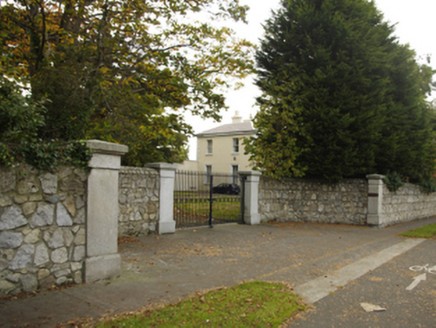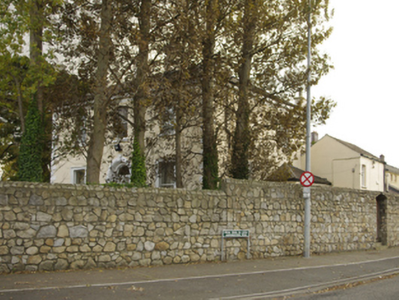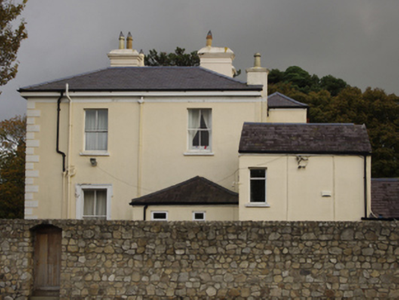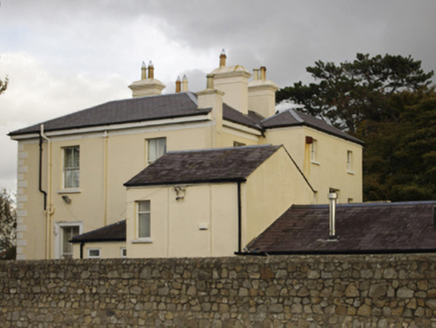Survey Data
Reg No
60230065
Rating
Regional
Categories of Special Interest
Architectural, Artistic, Historical, Social
Original Use
House
Date
1860 - 1896
Coordinates
321101, 226803
Date Recorded
28/11/2016
Date Updated
--/--/--
Description
Detached three-bay two-storey house, extant 1896; occupied 1901, on a T-shaped plan with two-bay two-storey side elevations; two-bay (single-bay deep) two-storey central return (south). Now disused. Hipped slate roof on a quadrangular plan abutting hipped slate roof (south) with ridge tiles, paired rendered central chimney stacks having stringcourses below corbelled stepped capping supporting terracotta or yellow terracotta tapered pots, and cast-iron rainwater goods on rendered eaves retaining cast-iron downpipes. Rendered walls on rendered chamfered plinth with rendered quoins to corners supporting rendered band to eaves. Segmental-headed central door opening approached by flight of five cut-granite steps between wrought iron railings with rendered panelled surround centred on keystone framing timber panelled door having overlight. Square-headed window openings (ground floor) with cut-granite sills, and moulded rendered lugged surrounds framing one-over-one timber sash windows. Square-headed window openings (first floor) with cut-granite sills, and concealed dressings framing one-over-one timber sash windows. Square-headed window openings (remainder) with cut-granite sills, and moulded rendered lugged surrounds (ground floor) or concealed dressings (first floor) framing two-over-two timber sash windows. Interior including (ground floor): central hall retaining carved timber surrounds to door openings framing timber panelled doors; and carved timber surrounds to door openings to remainder framing timber panelled doors with timber panelled shutters to window openings. Set in landscaped grounds on a corner site with cut-granite piers to perimeter having cut-granite shallow pyramidal capping supporting spear head-detailed wrought iron double gates.
Appraisal
A house representing an integral component of the mid nineteenth-century domestic built heritage of south County Dublin with the architectural value of the composition suggested by such attributes as the compact plan form centred on a restrained doorcase; and the diminishing in scale of the openings on each floor producing a graduated visual impression with those openings showing sleek "stucco" dressings. A prolonged period of unoccupancy notwithstanding, the elementary form and massing survive intact together with substantial quantities of the original fabric, both to the exterior and to the interior, thus upholding the character or integrity of a house having historic connections with James Mullins (d. 1906), 'Owner of Property late of Sefton House Stillorgan County Dublin' (Calendars of Wills and Administrations 1906, 324).







